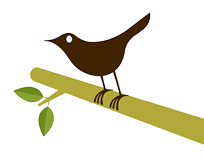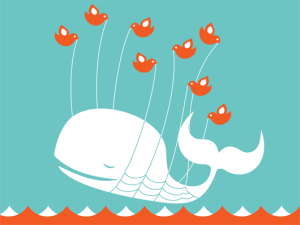 Twitter turns three today. It’s a birthday some might not have thought the service would live to see after severe downtime and reliability issues during its second year in existence. But Twitter made the hires it needed to, kicked its problems, and endured. Actually, it thrived.
Twitter turns three today. It’s a birthday some might not have thought the service would live to see after severe downtime and reliability issues during its second year in existence. But Twitter made the hires it needed to, kicked its problems, and endured. Actually, it thrived.
When it launched back in 2006, it was known as Twttr, and was a side project of podcasting service Odeo. We briefly covered it in July of that year, in a roundup of interesting startups. (Both TechCrunch and GigaOM also covered it back then.) The original idea was as a sort of mass-texting service. You sent a text message to Twttr, and it sent it out to your friends.
But while Odeo, founded by Noah Glass and Evan Williams (now Twitter’s chief executive), struggled, Twttr, evolved from a side project, into a service of its own. Williams created Obvious Corp. to work on projects such as Twitter and sold Odeo in 2007, putting the focus solely on Twitter.
In March of 2007, Twitter first really put itself on the map by taking the SXSW festival in Austin, Texas by storm. It not only won an award in the blogging category there, it aslo set up monitors throughout the convention center to show what other people were tweeting.
AI Weekly
The must-read newsletter for AI and Big Data industry written by Khari Johnson, Kyle Wiggers, and Seth Colaner.
Included with VentureBeat Insider and VentureBeat VIP memberships.
That was right around the time I started really using the service. Believe it or not, back then, the service automatically refreshed every few seconds, one of the first features killed as its popularity grew. But that popularity wasn’t too easy to come by in the early days. As I recall, nearly everyone I talked to about the service thought it was one of the dumbest things they’d ever heard of. Of course, all of those people now use Twitter — many of them religiously. (I’ll be nice and omit names.)
 As I wrote back in March of 2007:
As I wrote back in March of 2007:
Twitter could be an excellent tool for a number of websites like Facebook (which already has a similar status update that is not nearly as widely used), but I hope it stays independent. I love how simple the site and its interface is right now.
And throughout 2007, Facebook kept getting a bit more like Twitter with its status updates. Of course, late last year, Facebook tried to buy Twitter, but the deal fell through. Instead, Facebook went ahead with a new design that takes a lot of cues from Twitter but which some users hate.
By the end of 2007, most of the tech world was talking about Twitter — and, not surprisingly, predicting its death. Many questioned how a service with no business model (and yes, it still doesn’t have one) that asks for mundane status updates could survive. Of course, most people were only just starting to realize that Twitter wasn’t just about mundane updates, it was about whatever you wanted it to be about. For some that meant spreading breaking news; for others, it meant sending out links.
2008 was Twitter’s most important year. It started out God-awful — crashing left and right. From there, it only got worse.
Not only was it constantly crashing, there were issues like missing tweets in timelines, and Twitter failed to let users know what was going on. But Twitter remained popular as it once again dominated SXSW in 2008. Then, the press coverage shifted to focusing on Twitter’s downtime and the “Fail Whale” (pictured: right) entered the geek lexicon.
People began getting louder about Twitter’s lack of monetization and were complaining that no one outside a few people in Silicon Valley cared about the service. The calls for other services “killing” Twitter were renewed.
But still, Twitter kept growing.
In May, Twitter raised a new $15 million round, and put in place a plan to turn its woes around. It made a few gutsy calls to turn off key features like IM functionality and its popular “follow” feature. The service got a bit more stable but was still incredibly slow and would crash for extended periods of time on a weekly basis. Then, in June, it brought in outside help from Pivotal Labs, a group of for-hire developers. From there, things started to improve.
And with the service stable, Twitter really started to take off in the second half of 2008. In July, it bought the Twitter search engine, Summize (a move some of us predicted), which it has since renamed Twitter Search. This was arguably the most important move in the company’s history, as Twitter search is a powerful tool for real-time information. And, yes, could even one day help the company monetize the service.
Later in 2008, celebrities and traditional news media started using Twitter en masse. And events like the Presidential election, the Mumbai terrorist attacks and the Hudson River plane crash brought it to new heights.
Major companies like Dell started using it to make some money. And while there is still no business plan implemented, Twitter is now in no hurry to get one thanks to a fresh $35 million funding injection (and a $250 million valuation).
So happy birthday, Twitter. Here’s to a long life (or a healthy nine-figure sale).
You can find me on Twitter here along with fellow VentureBeatniks Eric Eldon, Dean Takahashi, Anthony Ha, Camille Ricketts, Dan Kaplan and Matt Marshall. We have a VentureBeat account (for our posts) as well.
(And thanks to @jacobmullins and @anandiyer for the @parislemon birthday cake in the picture.)
VentureBeat's mission is to be a digital town square for technical decision-makers to gain knowledge about transformative enterprise technology and transact. Learn More
